Cookstown congestion: Public to have say on A29 plans
- Published
'Cookstown congestion is a major problem'
Plans to tackle traffic problems on one of Mid Ulster's busiest roads have been put out to public consultation.
The A29 runs through the centre of Cookstown, which is renowned for having one of Northern Ireland's longest main streets.
Many businesses are in favour of a bypass but some concerns have been raised about the effect on land near an historic castle.
The Department for Infrastructure said it had kept all landowners informed.
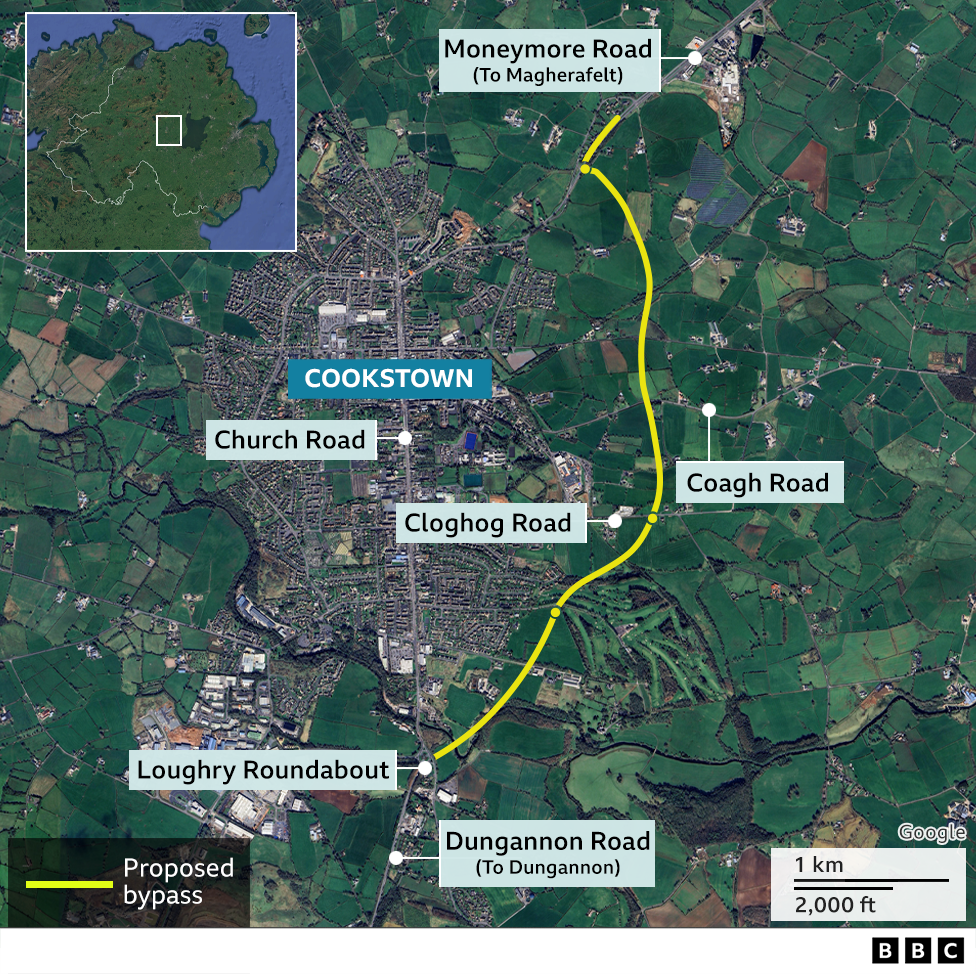
A map of the proposed route for a Cookstown bypass
Plans for a Cookstown bypass date back more than 40 years, but the issue has gained momentum again with the launch of a government consultation on the £70m proposals.
On Tuesday, the Department for Infrastructure (DfI) will host a public information day in the town's Burnavon Theatre.
'Almost an hour for a mile'
Johnny Finch owns a number of businesses and properties in Cookstown, and two of his forecourt shops sit at either end of the main street.
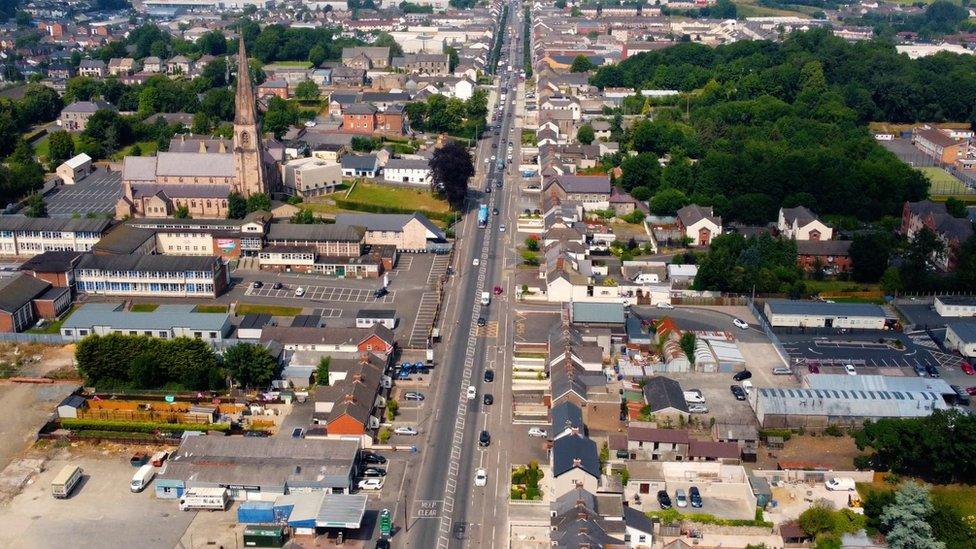
Cookstown has one of the longest main streets in Northern Ireland
"Anybody who drives through Cookstown at a busy time knows congestion is a major problem," he said.
"The street is only about a mile long, but there are times it could take me the best part of 50 minutes to get between my two stores at either end.
"If timescales are managed properly, the bypass is an opportunity to re-establish Cookstown as a vibrant market town.
"We've seen the positive impact a bypass has had on retail in Magherafelt, so we should be encouraged by that."
The A29 road connects Coleraine on the north coast to Cookstown, Dungannon and onwards to Armagh City. It is one of four link corridors within Northern Ireland's transport network.
DfI says a bypass would reduce the risk of accidents, improve air quality and attract more visitors and shoppers to the town.
Under the current plans, the carriageway would be about 4km (2.5miles), extending from the A29 Dungannon Road roundabout to the south of Cookstown.
Killymoon Castle
The bypass could affect a number of businesses during the construction phase due to temporary disruption in accessing their properties.
The local golf club could also lose some land and DfI said it had been in regular contact with club officials.

Dorothy Coulter and her family now own and live in the grounds of the Killymoon Castle
Two private access roads leading to a historic Grade A listed building on the outskirts of Cookstown would also be affected.
Killymoon Castle was originally built in 1600. It was designed by John Nash, the architect behind the Regent Street area of London and the city's most famous landmark, Buckingham Palace.
The Coulter family now own and live in the grounds of the castle.
Castle Road and Killymoon Road lead into private access roads serving the castle and golf club. The proposed bypass will affect the land for these private access roads.
"We're certainly not against the bypass in principle as we know the town needs it," said Dorothy Coulter.
"But the latest plans will see the entrances near Killymoon Road and Castle Road impacted, so it is going to affect this historic site."
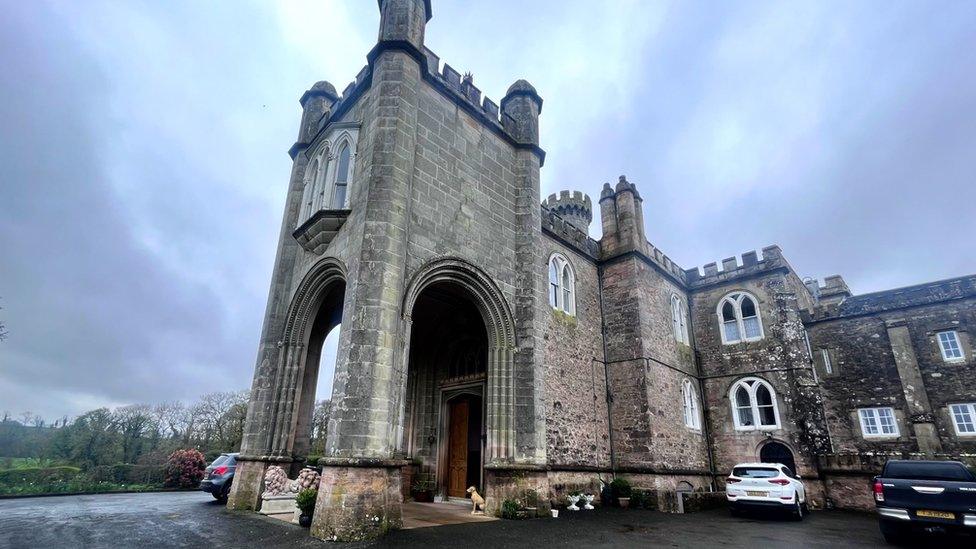
Killymoon Castle was originally built in 1600
Under current proposals for the bypass, the distance from the castle to Cookstown main street would go from 1.9km to 3.3km.
"From a practical point of view it also adds on to my journey for collecting the grandchildren from school," Mrs Coulter added.
"We're asking the department to consider a way of at least keeping the lane near the Killymoon Road open and protecting the historic grounds of the site."
Funding?
The Department for Communities' historical environment division (HED) has responsibility for protecting listed buildings in Northern Ireland.
"We would expect to be consulted on planning applications for changes to the entrances or any changes which impact on the setting of Killymoon Castle," a spokesperson said.
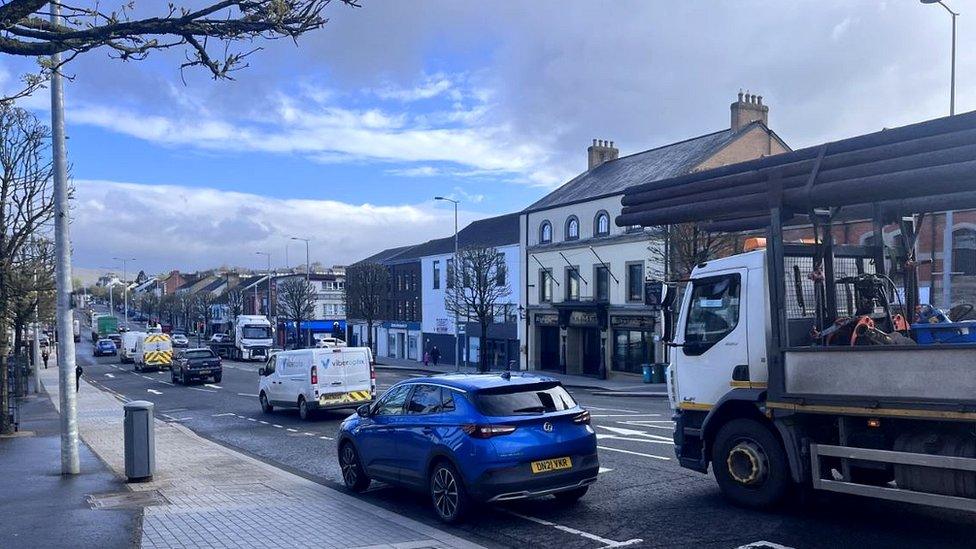
An early morning view of the main street in Cookstown
The DfI said HED was consulted as part of the environmental impact assessment report.
A DfI spokesperson added: "The proposed A29 Cookstown Bypass is of strategic importance to the town and its surrounding area, alleviating traffic congestion within Cookstown, reducing journey times along the A29 trunk road corridor, improving road safety and the town centre environment.
"Throughout the development stages of the scheme, the department has striven to keep all affected landowners informed of the scheme proposals through various meetings which have included Killymoon Castle."

Wesley Johnston is a researcher with expertise on Northern Ireland's roads
Where all the money to fund the bypass will come from still remains to be seen.
Last year it emerged that a number of major road schemes in Northern Ireland were in doubt after DfI said it had "paused" preliminary work.
The A29 Cookstown bypass was earmarked as going ahead.
Wesley Johnston is a researcher with expertise on Northern Ireland's roads.
"The A29 bypass is getting some money from the Mid South West Growth Deal, but that won't cover it all," he said.
"Cookstown main street is one of the longest and busiest in Northern Ireland, so although the proposals are further on than maybe they've ever been, until the bulldozers hit the ground, nothing is certain."
Related topics
- Published15 August 2023
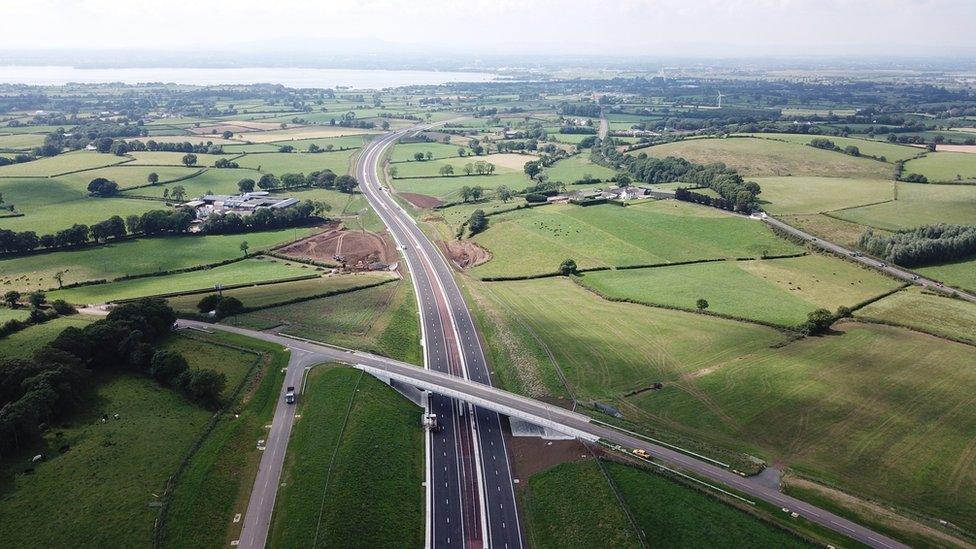
- Published20 February 2024
